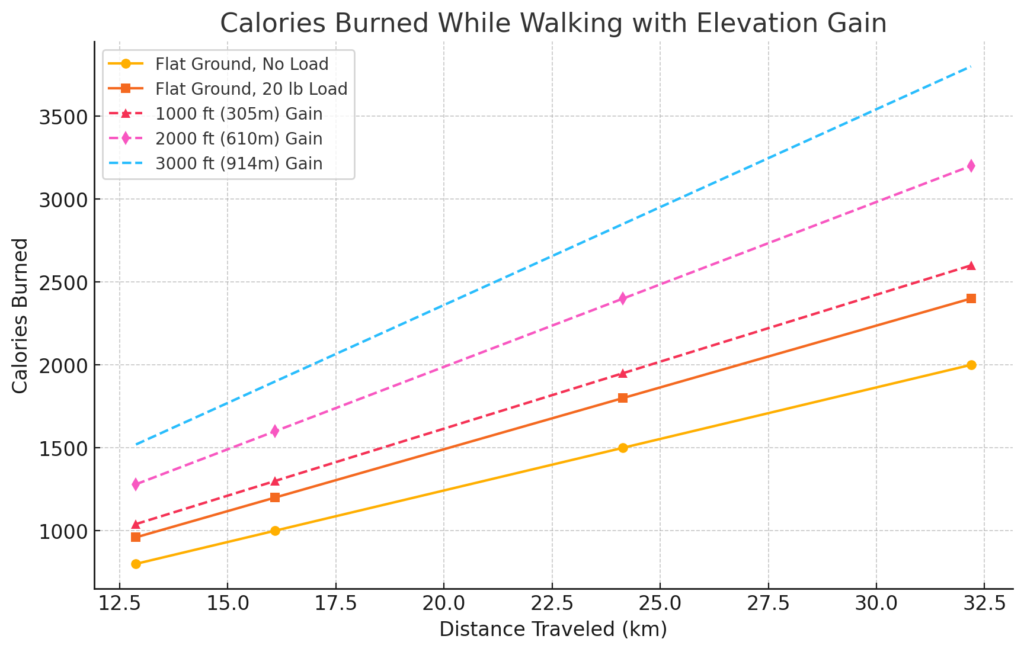Prepping for the Trekking: A full body workout
Backpacking is an extreme sport. The physical exertion is unlike almost anything in daily life. Your entire body is suddenly thrust into carrying a heavy load it’s not accustomed to. To boot, every 1,000 feet of elevation gain or loss adds the equivalent energy expenditure of walking an extra mile on flat ground. That means a two-mile flat hike burns the same calories as a one-mile hike with 1,000 feet of elevation change.
Planning a backpacking trip requires calculating how much time and energy it will take to get from camp to camp. Any weaknesses or imbalances in your body will be revealed—and can ruin your trip. So, how do you prepare? How do you avoid getting your ass kicked by the mountain? The answer: proper training.
The Right Kind of Training
Sure, lifting heavy at the gym helps. But for a rewilder, daily training hikes make way more sense. Even if you live in the city, putting on your loaded pack and walking around a park trains the exact muscles you need. Plus, you’re getting sunshine and fresh air—key parts of the Circadian balancing lifestyle.
Training hikes also let you dial in your backpack fit and test your clothing. Don’t let bad weather stop you—see it as a chance to test your rewilding gear before hitting the trail. When the time comes for your real trek, you’ll have full confidence in both your body and equipment.
Strengthening Your Feet
If you’re rewilding your feet, this is the perfect time to train with minimalist shoes or even go barefoot. This strengthens your natural alignment and foot muscles, essential for longer treks. If you’re new to barefoot shoes, start without carrying a load. The extra weight is for advanced rewilders.
A Free, Full-Body Workout
This training isn’t just for hiking—it’s the ultimate full-body workout, and it’s free. Plus, if you’re hiking in the woods, you get the added benefits of forest bathing—reduced stress, improved mood, and enhanced well-being.
A Simple Training Plan
Try this one-hour-per-day workout to build strength for the mountains.
- Choose Your Trail or Route: Find a local trail or loop.
- Pack Your Pack: A weekend backpacking load is around 20-25 lbs (9-11 kg). Start lighter if needed.
- Go on Your Daily Hike: Aim for at least 3-4 times per week.
- Increase the Load: Add more weight gradually—water bottles work great for this.
- Test Your Balance & Gear: Train on uneven terrain. Consider using trekking poles for added stability. If needed find some stairs to climb.
Once you can hike comfortably for an hour with your target pack weight, you’ll be extra ready for the real deal.
Fueling for the Trek
As you train, you’ll naturally start eating more to support muscle growth and energy demands. This helps you calibrate your food intake for the trail. Pay attention to how much you eat now so that when it’s time to pack for a trip, you’ll know exactly how much food you need.
Recovery & Longevity
Your body will need maintenance. As you build strength, incorporate massage, yoga, foot rehab (rollers), saunas, and hot baths to relieve sore muscles. Over time, this routine will make trekking in the mountains with a heavy load feel effortless—you’ll hit the trail with a skip in your step and a smile on your face.


